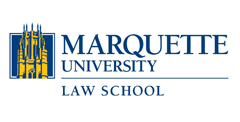Abstract
With technology constantly changing, the interaction between copyright law and technology is always at odds, especially since the evolution of the Internet. To keep up with the ever-changing Internet, Congress enacted the Digital Millennium Copyright Act; specifically, it created four safe harbors that are intended to protect entities from copyright infringement that qualify as online service providers. However, it seems that the courts have had trouble interpreting who is covered under these safe harbors, namely, as to what entities qualify under the first safe harbor "Transitory Digital Network Communications." There are only a few cases where entities have qualified under the "Transitory Digital Network Communications" safe harbor. This Comment will argue that more entities should qualify under the safe harbor 17 U.S.C. § 512(a), "Transitory Digital Network Communications." Section 512(a) is an underutilized safe harbor that applies to more than just Internet service providers. Taking a broader view, as long as an IM or peer-to-peer file sharing program qualifies as an online service provider under 17 U.S.C. § 512(k)(1)(A) and complies with both 17 U.S.C. § 512(i) conditions, the program should qualify for the 512(a) safe harbor because users are required to use the same IM or peer-to-peer software. These programs provide connections for users to transfer material through a digital network, which may be either the program's network or the Internet since the material transferred is the same either way, that is initiated by the user and carried out through an automatic technical process that does not select the recipients of the material, store any copies of the material, or modify the content of the material. By refusing to acknowledge this, courts are defying Congress's intent behind the passage of the 512(a) safe harbor and creating liability for entities that should be immune to copyright infringement
Repository Citation
Sven Skillrud,
An Umbrella or a Canopy?: Why the 17 U.S.C. Section 512(a) Safe Harbor Should Be Read Broadly,
9 Marq. Intellectual Property L. Rev. 91
(2005).
Available at: https://scholarship.law.marquette.edu/iplr/vol9/iss1/4
